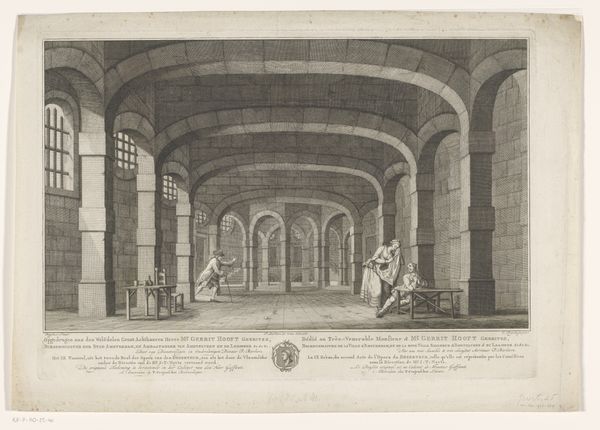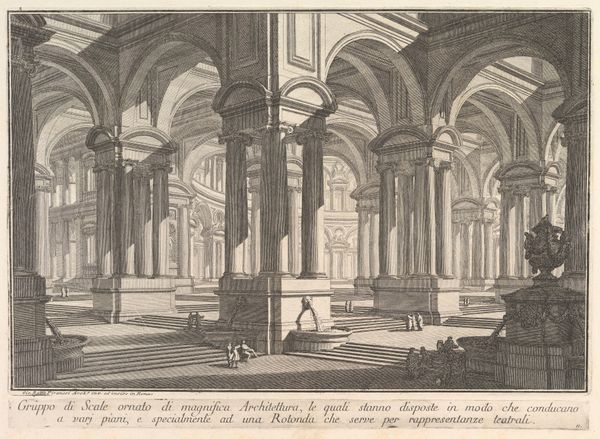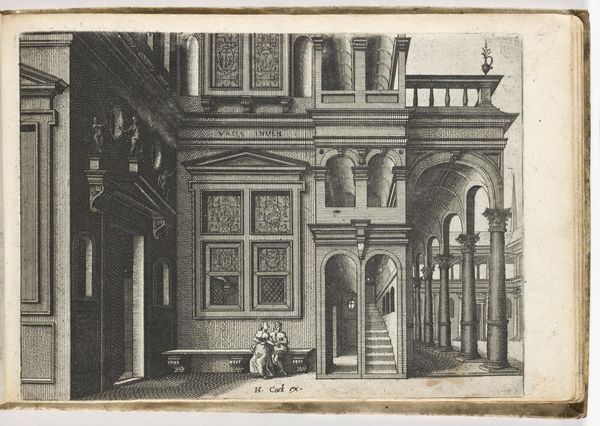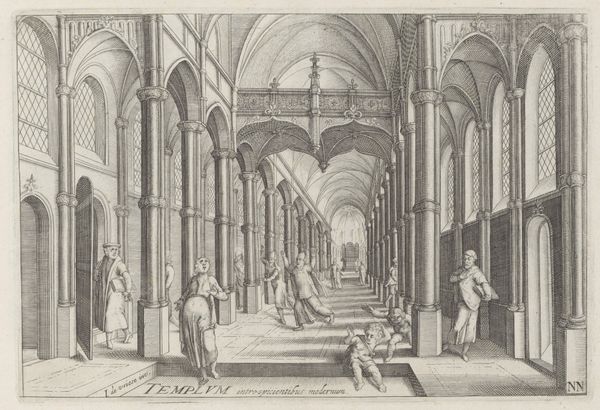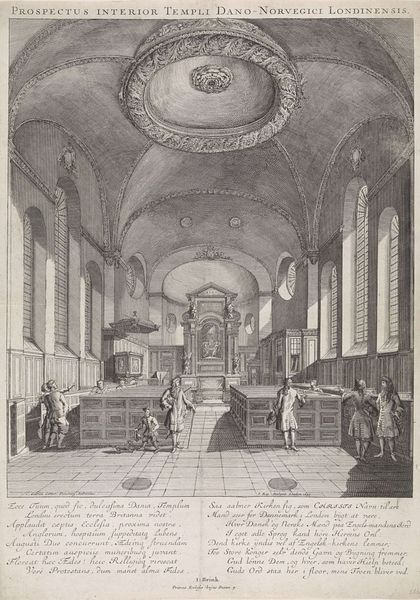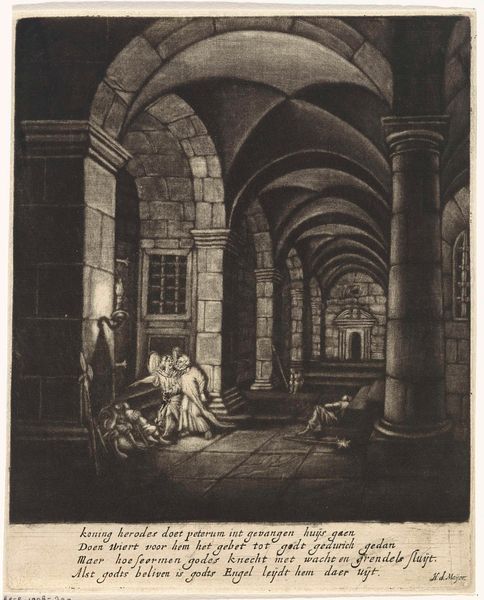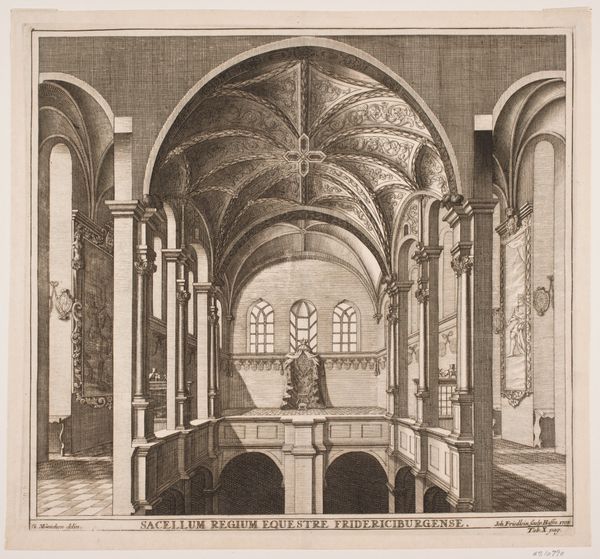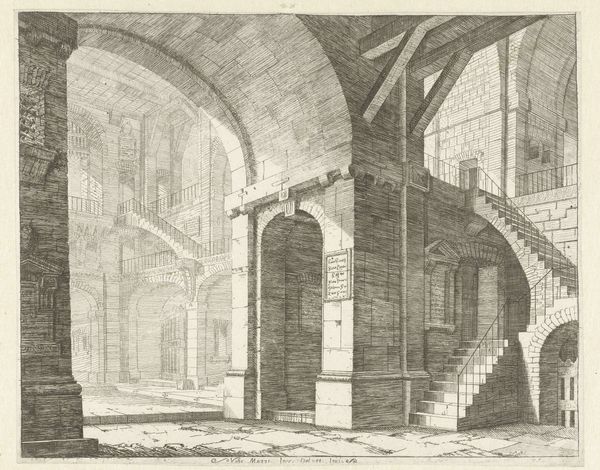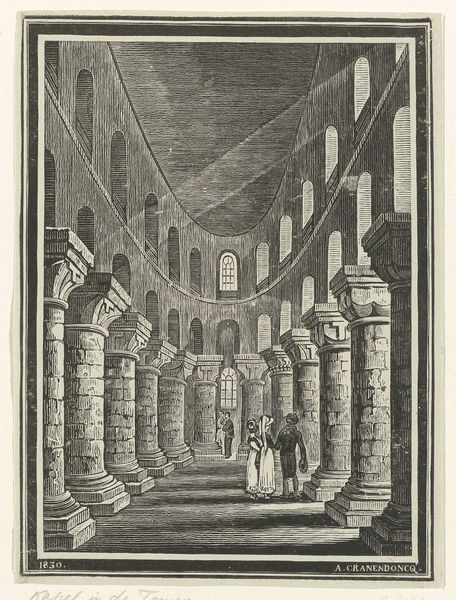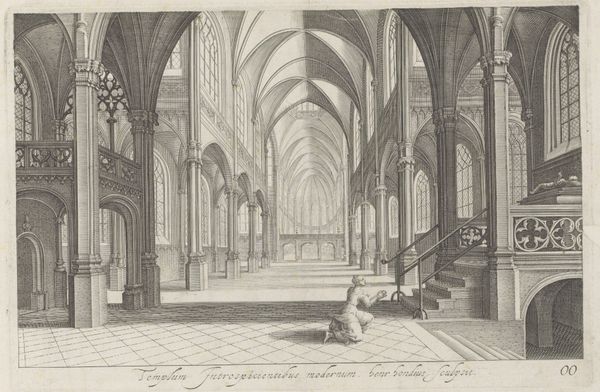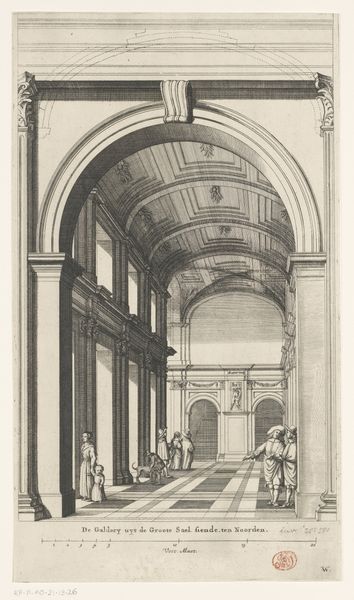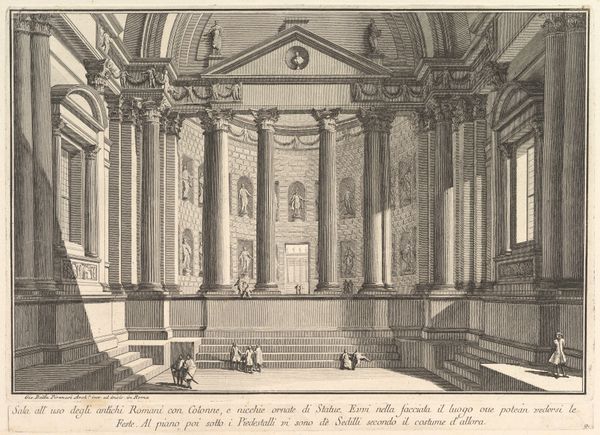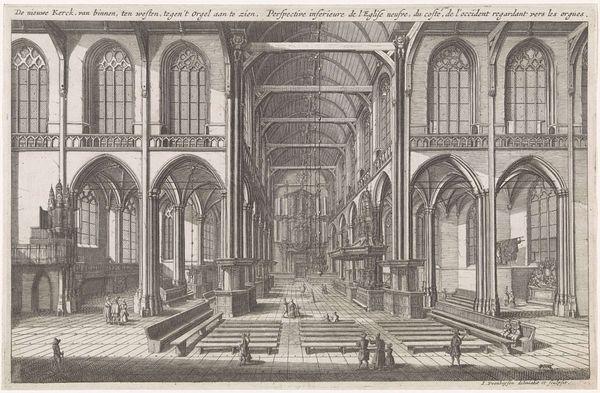
print, intaglio, engraving
#
narrative-art
#
baroque
# print
#
intaglio
#
old engraving style
#
history-painting
#
engraving
Dimensions: height 181 mm, width 228 mm
Copyright: Rijks Museum: Open Domain
Editor: Here we have Pieter Nolpe’s "The Liberation of St. Peter from Prison," an engraving from around the 1630s or 40s, housed here at the Rijksmuseum. I'm immediately struck by the architectural detail; you can almost feel the weight of those stone arches. What stands out to you about it? Curator: What’s compelling here is to consider the printmaking process itself. Look at the marks made by Nolpe. He has deployed a variety of tools, each interacting differently with the copperplate to produce a variety of linear effects to produce areas of shadow and light to suggest depth. How was this print used, and who consumed it? Editor: Interesting. I hadn’t really considered that. Perhaps to illustrate religious texts? Curator: Possibly. Think about the economics of printmaking. How does a relatively reproducible image circulate, and how does it inform and shape cultural attitudes towards religion and authority at the time? This also was a time when new forms of publishing and political propaganda became widespread through print production. Consider how this artwork might relate to that context. Editor: So, beyond just depicting a biblical scene, the artwork also participates in a wider shift of information and maybe even political power? Curator: Precisely. It becomes less about the "divine intervention" portrayed and more about understanding how such narratives were crafted, disseminated, and consumed within a specific historical framework. This makes us think of the workshops, the labour and trade of printing itself. What have you learned from examining this work in this way? Editor: It completely reframes how I look at even seemingly straightforward religious imagery. I now appreciate the process behind it. Thanks for your insights. Curator: My pleasure. Looking beyond the immediate subject allows for a deeper understanding of the period's socio-economic structures, which has truly widened my perspective, too.
Comments
No comments
Be the first to comment and join the conversation on the ultimate creative platform.
